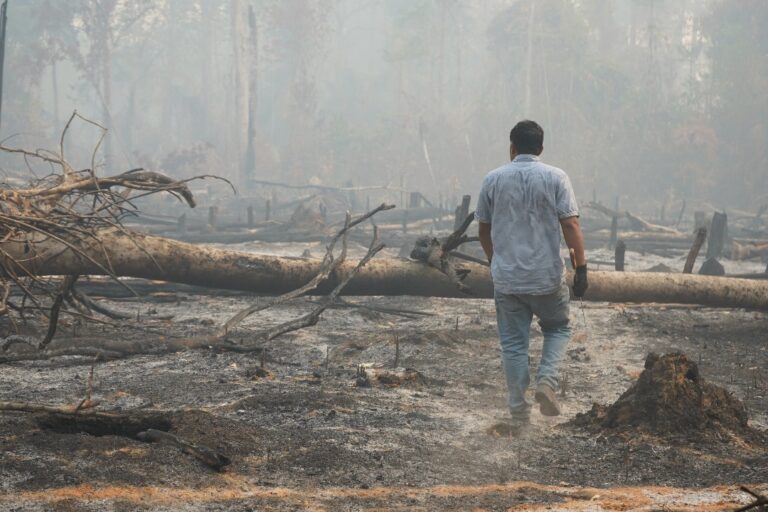Extreme drought wrecks rivers and daily life in Amazon’s most burnt Indigenous land
 news.mongabay.com
news.mongabay.com
- Almost 20% of the Kayapó Indigenous Territory has burned in this year’s Amazon drought, the worst ever recorded in Brazil.
- The land has for years been subjected to illegal mining, cattle ranching and burning of forests, degrading both the soil and rivers and significantly disrupting the way of life for the Mebêngôkre-Kayapó people.
- The Indigenous inhabitants now confront a growing crisis as wildfires and drought threaten their lands, particularly along the Riozinho River.
- According to ecologist Rodolfo Salm, who has worked with the Kayapó since 1996, fire has now surpassed illegal logging as the greatest danger to the region.
SÃO FÉLIX DO XINGU, Brazil — In the village of Tepdjàti, nestled deep within the Kayapó Indigenous Territory in the Brazilian Amazon, the air is thick with smoke and the landscape is parched. The village’s only water source is an artesian well with a solar-power pump. But the thick smoke from nearby wildfires has blocked out the sunlight, leaving the device without any power.
Even water from the nearby river, once a lifeline for the village, has become polluted and undrinkable. “It’s not suitable for bathing, drinking, or preparing our food,” Ngory Maradona Kayapó, a local leader, tells Mongabay. The situation is dire, with crops like bananas, yams and manioc, all vital to the Indigenous villagers’ subsistence, reduced to ash by a recent fire.
This village is just one of many across the Kayapó Indigenous Territory, in the state of Pará, that’s grappling with the devastating effects of Brazil’s worst drought on record. The Riozinho River, which once sustained them, is now dry, forcing them to rely on contaminated streams for water. The drought, coupled with rampant wildfires, has wreaked havoc on the Kayapó way of life. With low river levels, boats, the primary form of transportation, cannot be used for delivering food or medicine or for transporting patients to hospitals. “The medicine that comes from the health service is very little. Many children are suffering from vomiting, diarrhea and fever,” Ngory says.